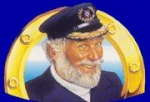Tout cela pour une ??? non montée
4 participants
Page 1 sur 1
 Re: Tout cela pour une ??? non montée
Re: Tout cela pour une ??? non montée
Ils sont cool les pompiers !!! 3 minutes pour se pointer !!
Et le con en dessous avec son extincteur , il y est passé dans le BBQ


Cet accident est arrivé le 19 août 2007 sur l'aéroport NAHA d' Okinawa , dû à l'embrasement du réacteur gauche après l'atterrissage . Rien n'a été oublié comme tu sembles dire Fred.
Tous les passagers ont été évacués par les toboggan comme prévu dans ce cas là .Seul deux pilotes qui sont sorti par la fenêtre droite du cockpit ont été blessés.
L'appareil était un Boeing 737-800 modèle des plus récents à cette date.
Et le con en dessous avec son extincteur , il y est passé dans le BBQ



Cet accident est arrivé le 19 août 2007 sur l'aéroport NAHA d' Okinawa , dû à l'embrasement du réacteur gauche après l'atterrissage . Rien n'a été oublié comme tu sembles dire Fred.
Tous les passagers ont été évacués par les toboggan comme prévu dans ce cas là .Seul deux pilotes qui sont sorti par la fenêtre droite du cockpit ont été blessés.
L'appareil était un Boeing 737-800 modèle des plus récents à cette date.

Alec- Coup de Cœur C.P.

-
 Nombre de messages : 31645
Nombre de messages : 31645
Age : 77
Localisation : Île d''Oléron
Modele Vette : C5 2001 Callaway+B&B Bullet ,Sway bar C6 Z06 jantes C6
Date d'inscription : 22/03/2007
 Re: Tout cela pour une ??? non montée
Re: Tout cela pour une ??? non montée
ça brule bien quand même un navion!!

lionne- Coup de Cœur C.P.

-
 Nombre de messages : 11168
Nombre de messages : 11168
Age : 62
Localisation : CDVL 45 ou Région sud 13
Modele Vette : Une ex C4 et trois ex C5
Date d'inscription : 01/11/2010
Page 1 sur 1
Permission de ce forum:
Vous ne pouvez pas répondre aux sujets dans ce forum








